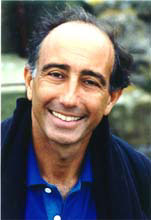 Recent alarms have been raised by worldwide pollution with these chemicals, which include: the pesticide DDT, banned in the U.S. in 1972 but still sold by U.S. corporations to other countries and still found in our own soil and water; the herbicide dioxin; and PCBs, which have been widely used in making electronic equipment, plastic, inks, adhesives, rubber and carbonless duplicating paper. Food, milk and water everywhere contain organochlorines.
Recent alarms have been raised by worldwide pollution with these chemicals, which include: the pesticide DDT, banned in the U.S. in 1972 but still sold by U.S. corporations to other countries and still found in our own soil and water; the herbicide dioxin; and PCBs, which have been widely used in making electronic equipment, plastic, inks, adhesives, rubber and carbonless duplicating paper. Food, milk and water everywhere contain organochlorines.
The Trouble with Fish
Organochlorine contamination may have seriously affected the safety of seafood. Although fatty fish are an excellent source of essential fatty acids, most pollutants tend to accumulate in fatty tissue, so that fatty fish are no longer safe to eat on a regular basis, especially if they come from lakes or rivers.
Solution: The safest fish to eat are low-fat fish caught off-shore, such as cod, haddock, pollock, flounder and yellowfin tuna. Many fish farms are found in agricultural areas where drifting pesticide sprays and agricultural runoff can be a serious problem, so, if you eat fish from farms, you must know your source.
Problems with Breastfeeding
In the ultimate environmental horror story, organochlorine contaminants have been found to either mimic or block the effects of human sex hormones. Hormonal effects of organochlorines have been blamed for increased rates of spontaneous abortion, toxemia of pregnancy, endometriosis, breast cancer and testicular cancer. If male fertility really is declining, as some scientists assert, organochlorines may be to blame. The high levels of organochlorines found in human milk raise frightening questions about the safety of breast-feeding.
Solution: I urge my patients not to lose weight while breast-feeding, but to eat heartily. Weight loss releases organochlorines stored in body fat, which travel into the blood and from there into breast milk. Weight loss should take place after weaning, not before. Because organochlorines appear to be most toxic to infants in the womb--but the effects of this toxicity are not apparent until adulthood--the extent of the organochlorine catastrophe will not be evident for at least another generation.
Hazards of Chloricated Water
Chlorination of municipal water supplies dramatically reduced the death rate from typhoid fever, a bacterial infection which is spread through drinking water. But chlorine reacts with organic matter dissolved in water to form cancer-promoting organochlorines like the trihalomethanes (THMs), of which the best known is chloroform. Drinking chlorinated water increases the risk of developing cancer of the rectum or the bladder, the risk increasing the more water is drunk.
Solution: filter your tapwater through activated charcoal, which removes the vast bulk of chlorinated compounds. Charcoal filters also remove other chlorinated contaminants of tap water, like trichloroethylene (TCE), a degreaser which enters municipal water supplies after being dumped in the soil.
Pestcides
Over a billion pounds a year of pesticides are still used every year in the United States alone. Environmentalists, farm workers, federal agencies and food growers continue to disagree about what constitutes "safe" levels of the twenty thousand registered pesticides. Since many of the most toxic agents remain in the environment for decades, and are most harmful to the young, their full impact has not yet been realized.
Solution: The obvious solution is to buy food that is organically grown in compliance with the standards of a state certifying organization. If these are not available, or to expensive, follow the advice of the Environmental Working Group, a research and advocacy organization in Washington, D.C., which has rated forty-two fruits and vegetables for pesticide contamination, based upon a study of fifteen thousand samples conducted by the FDA during 1992 and 1993. They used seven rating criteria, including the percentage of each crop with detectable pesticide residues and the known toxicity of each type of residue. The group calculated that fifty per cent of food pesticide exposure occurs through consumption of twelve foods. The vegetables with the greatest contamination were bell peppers, spinach, celery, green beans, and cucumbers. They recommended substituting less contaminated vegetables for these. The safer vegetables included green peas, broccoli, asparagus, romaine lettuce, carrots, radishes, brussel sprouts, and potatoes.
According to this same report, the commercial fruit most highly contaminated with pesticides were strawberries, cherries, peaches, Mexican cantaloupe, apples, apricots, and Chilean grapes. Less contaminated fruits included nectarines, blueberries, raspberries, blackberries, oranges, grapefruit, tangerines, watermelon, and seasonal domestic cantaloupe or grapes.